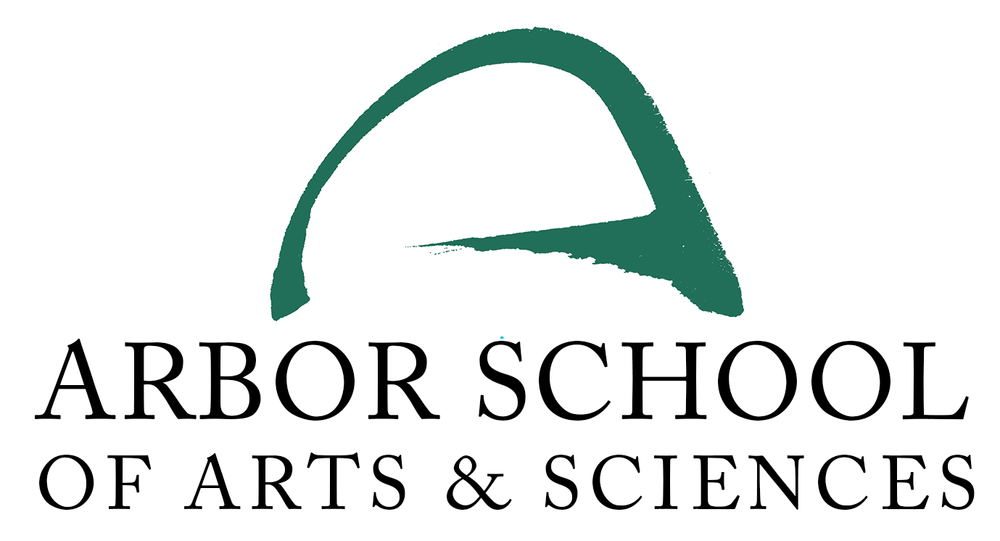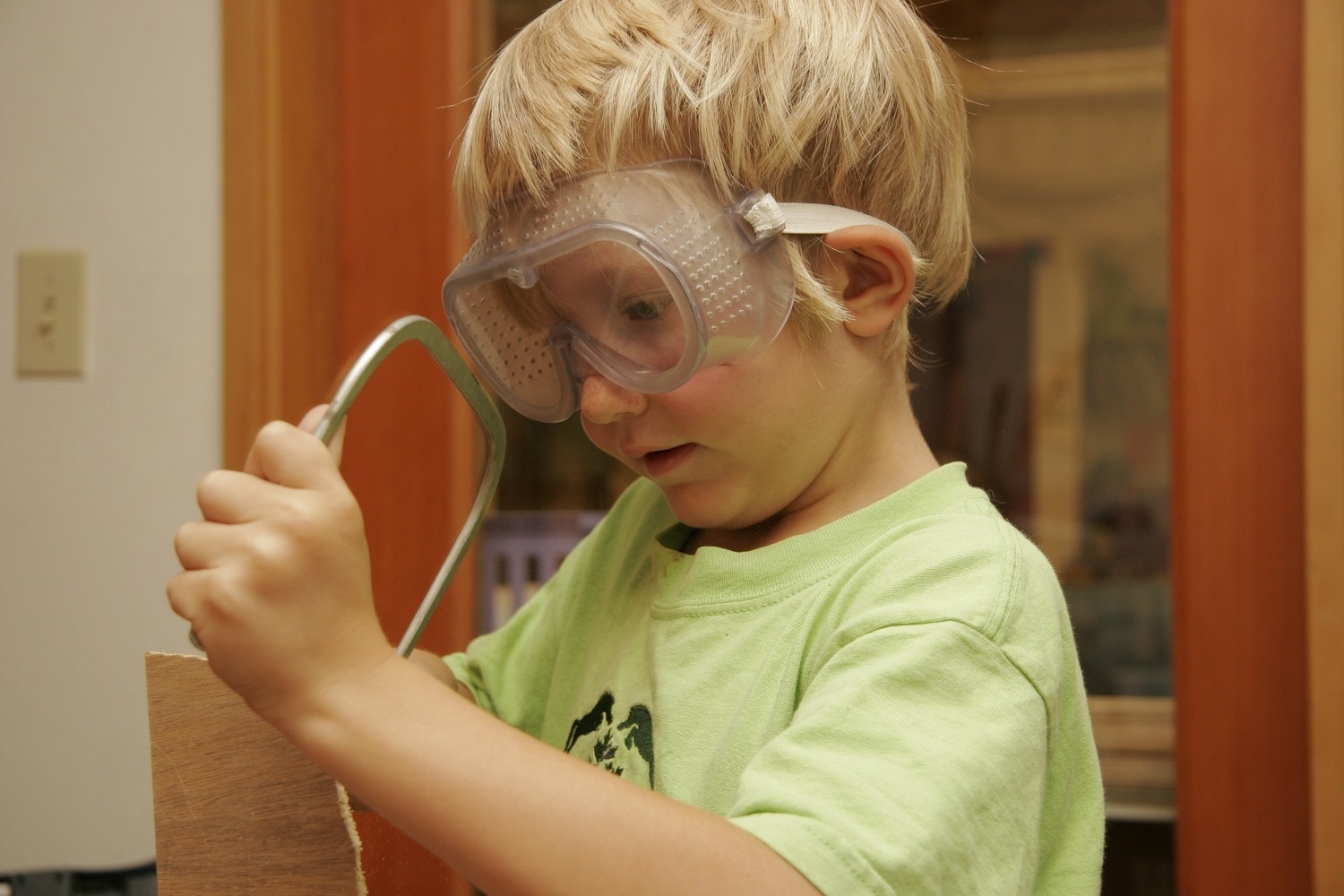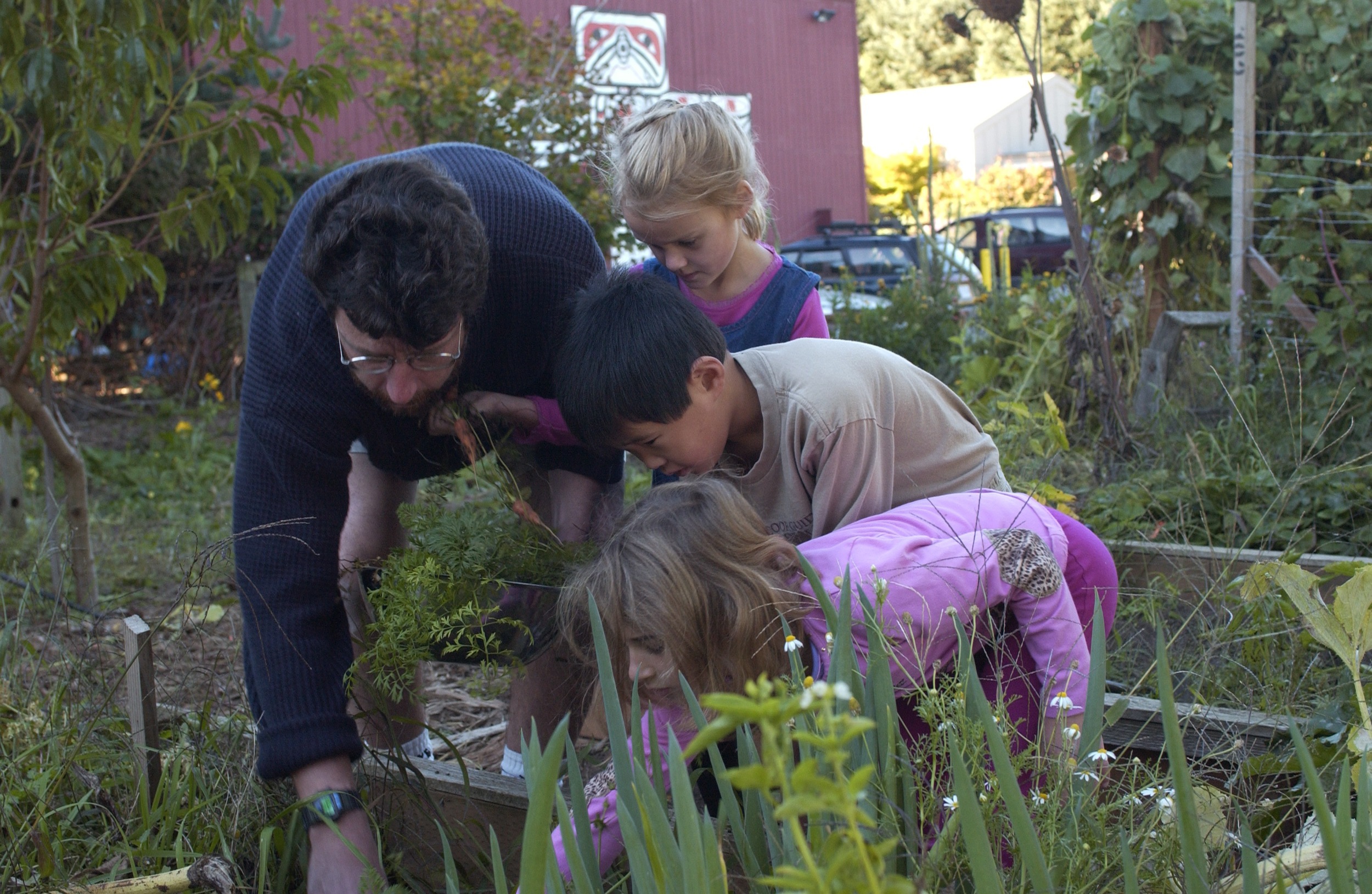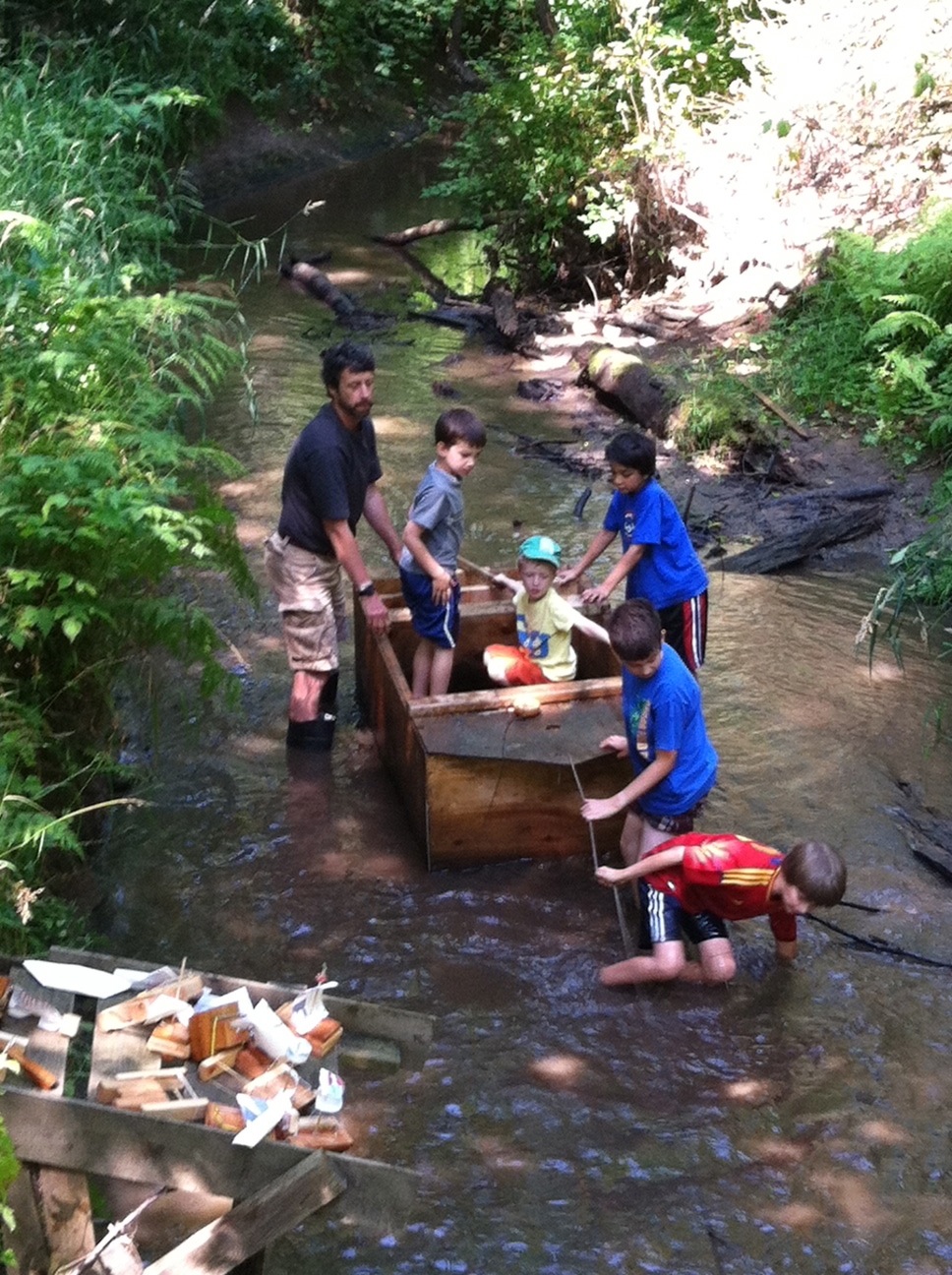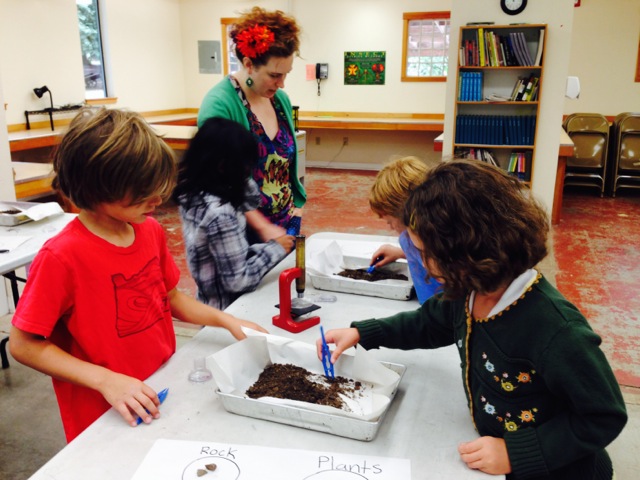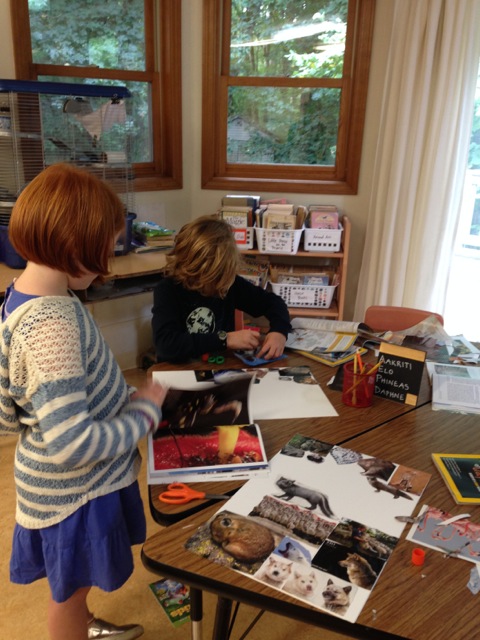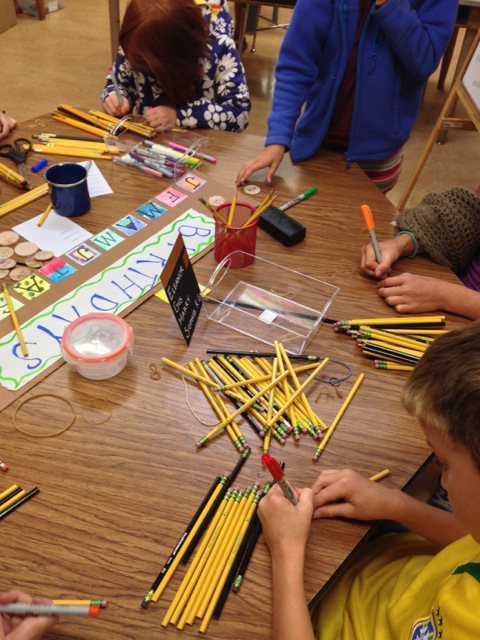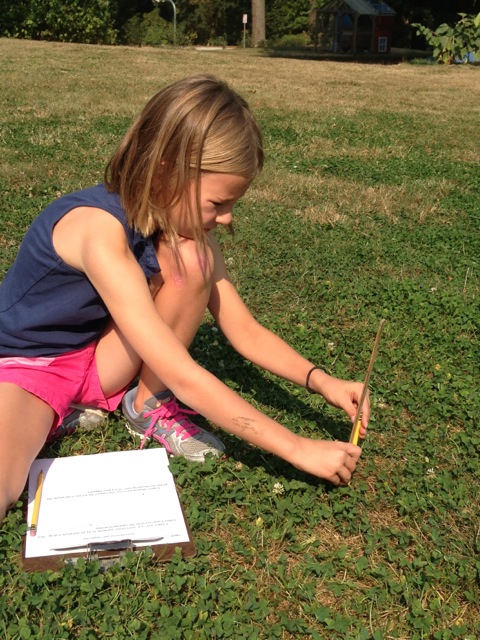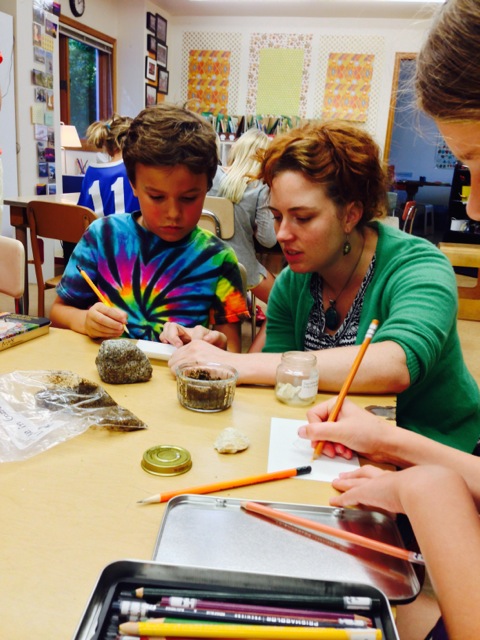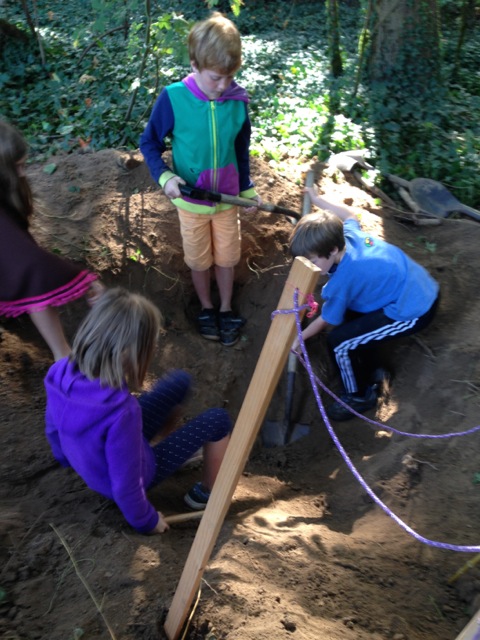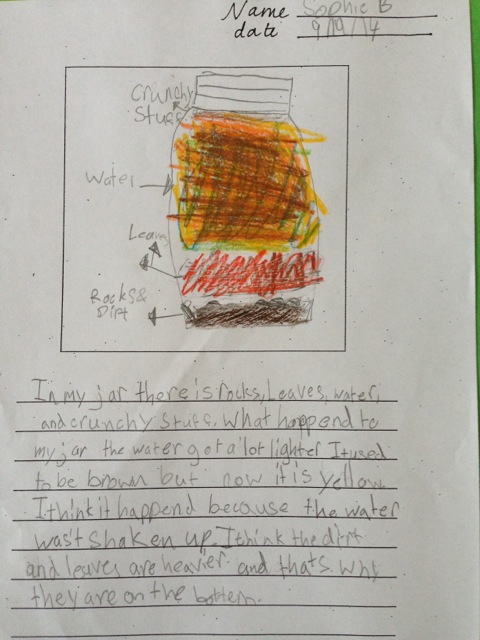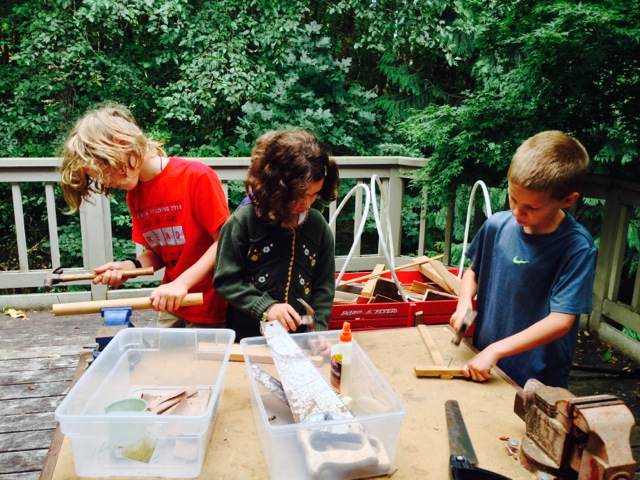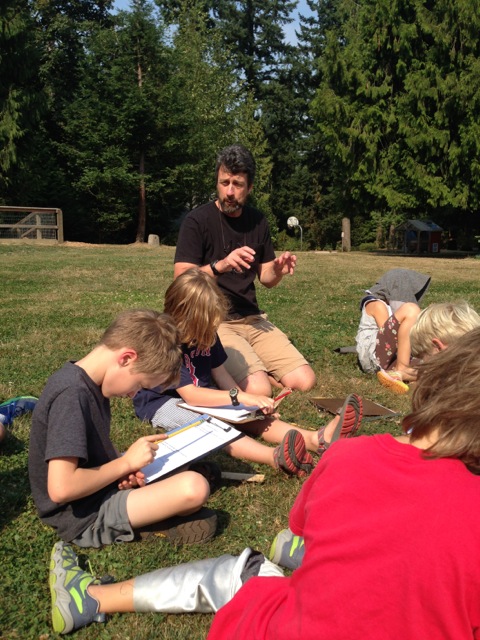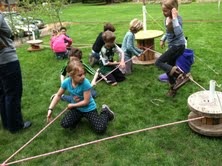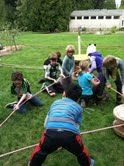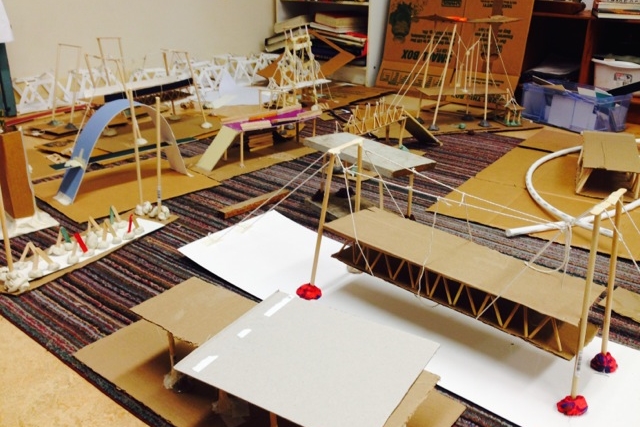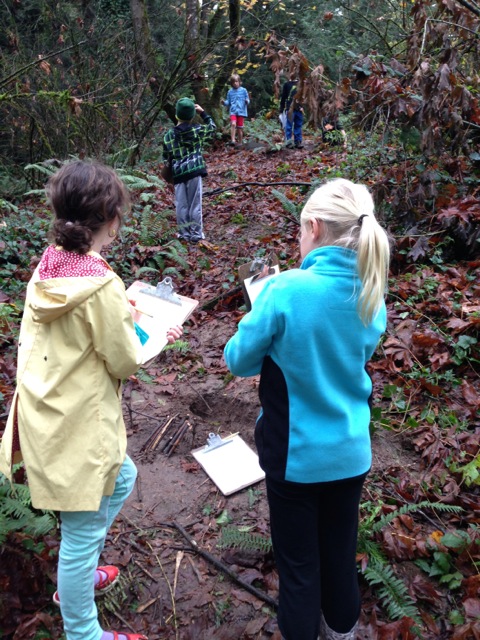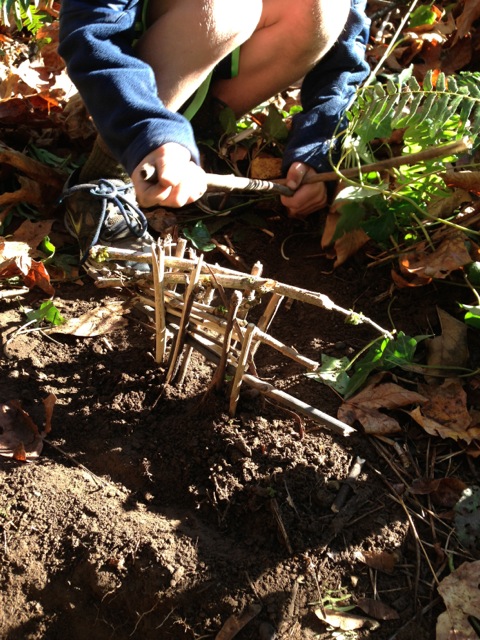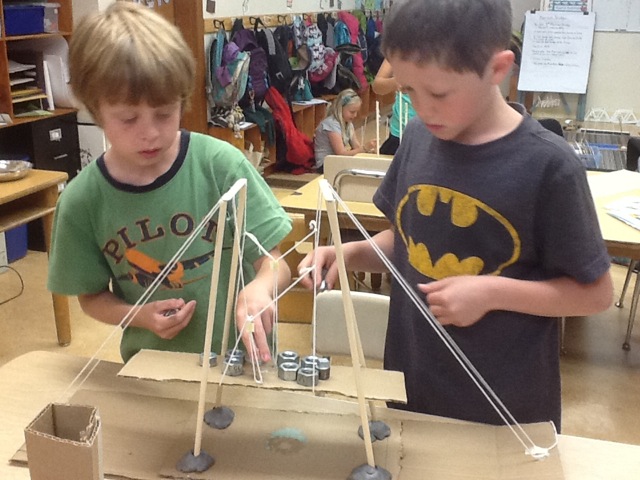JUNIORS – Second and Third Grade
Year 1: Change & Continuity
Humanities, Science, Design
In a year designed to build habits of observation and curiosity, Juniors explore the concept of change and continuity through studies of the Earth's geologic history, its weather systems, and human measurement of time. Students learn about the minerals, rocks, and soil that make up the Earth and study how the face of our planet—in particular our home region—has changed over time. Students also learn what makes the weather, what causes the atmospheric changes that we experience, and how we can predict those changes. They carefully measure and log this data, including a weekly measurement of the depth of the creek running through campus. Juniors explore the concept of time by learning about the evolution of understanding and measurement, and deepen their own understanding by constructing simple clocks and calendars.
Geology: geologic history of the Northwest, the rock cycle, earth science, mapping, digging beneath the surface of Arbor’s campus
Weather: clouds as predictors, the water cycle, wind, temperature, storms, data collection, constructing tools for measuring wind and precipitation
Time: time measurement from the beginning, telling time, creating clocks and calendars, a Biography Ball
Independent Projects: following curiosity and sharing expertise
Science and design overlap constantly under these themes. Juniors use the log from the drilling of Arbor’s campus well to create a scale representation of the layers of soil and rock beneath their feet. Students also construct devices to measure wind speed and rainfall and design a classroom mural of the troposphere. And students work to design and build a variety of time-keeping devices, studying simple machines to understand the mechanics of weight-driven timers before building their own.
Year 2: Communities
Humanities, Science, Design
In this year of culture and geography, Juniors study North America with a particular focus on the Northwest. We begin with a look at the emergence of our continent and the prehistoric animals that inhabited it. Students learn about the first Americans' migration from Asia and Central America and the development of distinct Native American cultures that are influenced by local climate and resources. The arrival of Europeans, westward expansion, and the changing population of the Northwest allows us to discuss migration in terms of the "push" and "pull" factors that cause communities to disperse and form anew elsewhere. Juniors delve into the history of Portland and explore concepts of engineering through a close look at the city's bridges.
North America: physical geography and paleontology
First Americans: First Oregonians, the Kalapuya, other North American tribes
Electricity & Magnetism: understanding magnets, the Earth’s magnetic field, compasses, batteries, models with electric motors.
Colonization & Human Migrations: Lewis and Clark, the Oregon Trail, Black Pioneers, Chinese immigrants in the Northwest,
Early Settlement of Portland: immigrant communities, Bridging Communities
Portland Bridges: study, visit, model using understanding of strong shapes and concepts of tension and compression.
We open the year by collaborating on a large, three-dimensional map of the continent's topography. Other major projects include the excavation of an archaeological test pit, mapping and compass work, and the design and construction of model bridges, which we test for weight-bearing capacity.
Mathematics
Junior students are ready to explore a math landscape of big ideas, complex real-world problems, strategies, and models. They come to us with a solid background in number relationships and have had experience with addition and subtraction. The thematic curriculum invites work with large numbers and even negative numbers, as we investigate very cold temperatures and compare distances above and below the earth's surface. Multiplication, division, and an increasingly thorough understanding of place value allow for rich explorations. The acquisition of knowledge and mastery of these new concepts is not linear. We work to help each student take up developmentally appropriate tools—manipulatives, number lines, graphs and tables—to represent their math thinking as they learn to organize and solve problems. The greater complexity of the work in the Junior classroom requires greater skill in recording ideas and strategies, and in learning to look over the work with an eye to reasonableness, accuracy, and completeness.
Number and Operations: building, extending, and predicting repeating and growing number patterns; solving for unknowns with addition/subtraction; understanding place value beyond three digits; estimating; functions; multiplication and division facts; zero, identity, and distributive properties; factors
Geometry: identifying, describing, comparing, classifying, & measuring shapes using vocabulary of angles, sides, perimeter and area; fractions of rectilinear and circular shapes; using concrete representations and pictorial modeling to represent and predict reflections, rotations, and translations; using coordinates to describe motion from one point to another; measuring angles
Measurement and Data: linear, weight, volumetric, and temporal measurements; calculating the difference in lengths of objects; telling time on analog clocks; comparing coin values; understanding relationships between units of scale; graphical representations of data
Literacy
By the Junior years, most students are reading and writing with growing fluency and thorough understanding. While good stories are the heart and soul of the reading curriculum, nonfiction reading is also a constant—many students are drawn to this genre to satisfy their own curiosity, and class studies support students in reading for research as well. Juniors love the drama of inhabiting a character from history or science, so we turn to role-playing to advance our studies on many occasions. Students build skill in harnessing the facts they have learned in the service of journal entries from the Corps of Discovery, advertisements for goods and services in a pioneer town, and biographical sketches of distinguished Americans. We give them abundant opportunities to learn by listening to books read aloud as well. Conversations about text help students learn to navigate the framework of central topics and supporting ideas. Turning to creative writing, Juniors are typically eager to apply knowledge of plot and character development gleaned from favorite stories to ambitious writing of their own, which furthers their practice at the technical side of the craft.
